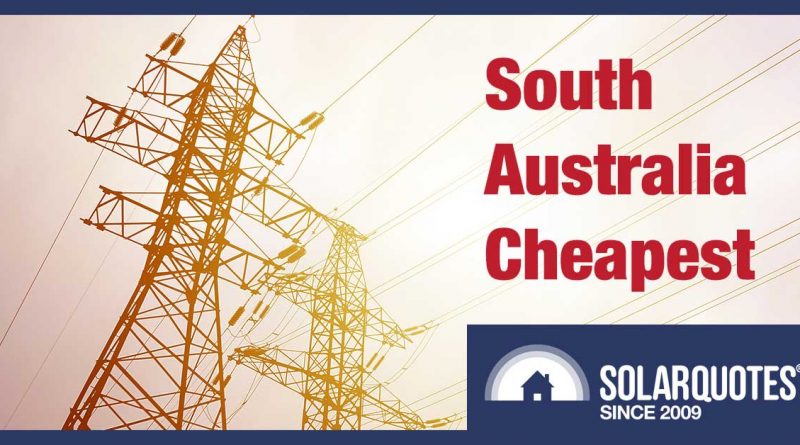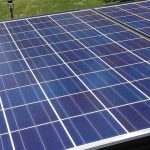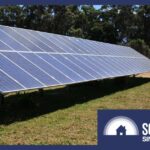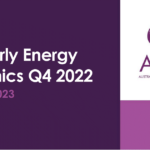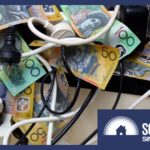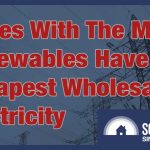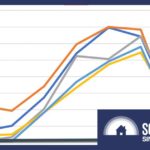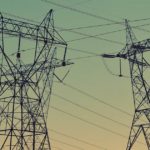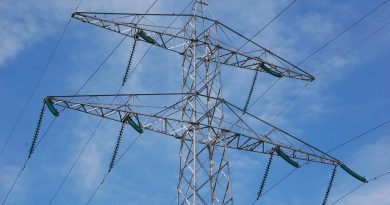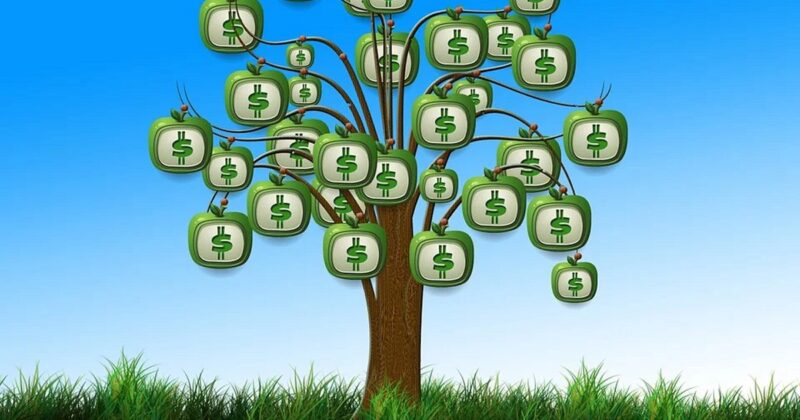SA’s Wholesale Electricity Prices Now Lowest In Nation Thanks To Renewables
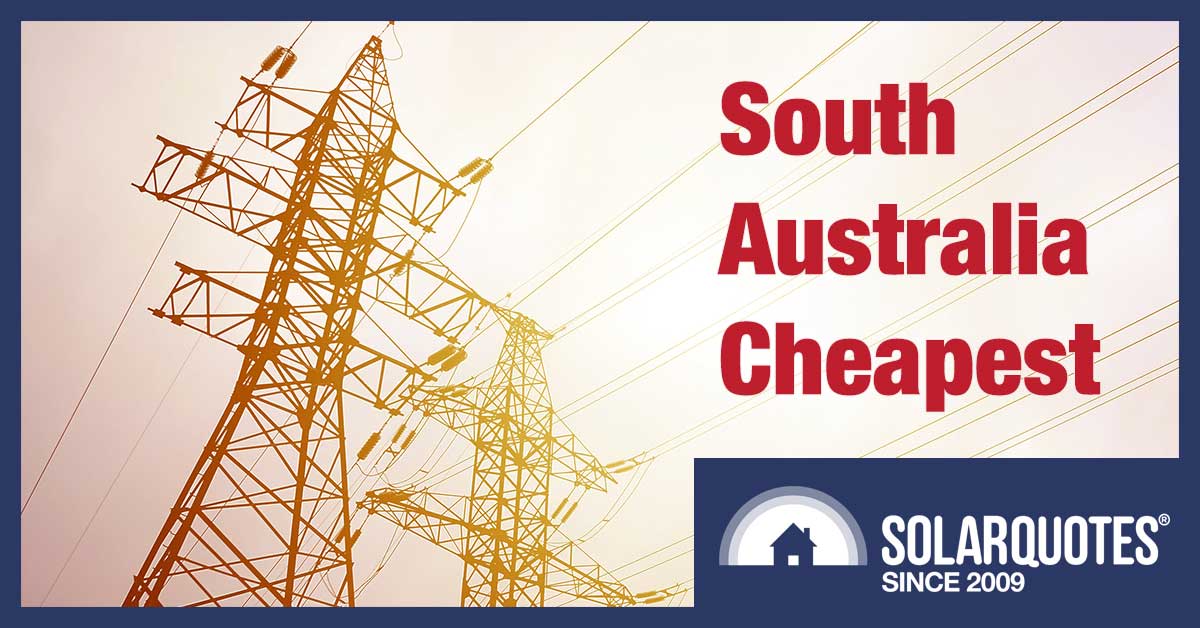
South Australia’s gone from embarrassingly expensive to the cheapest wholesale electricity in just 10 years.
Over the past 12 months wholesale electricity prices have tumbled across Australia. For the nation overall, they’re the lowest they’ve been for nine years. But one state did particularly well and a large part of its success was because it now generates over 60% of its electricity from wind and solar.
South Australia’s average wholesale electricity spot price has been the lowest of all the states so far this financial year. This was despite it being the only state to increase electricity consumption. This is a major change from the days when SA regularly had the nation’s most expensive wholesale electricity.
Two reasons why wholesale electricity prices have fallen so far:
- The COVID-19 related economic slowdown.
- The expansion of renewable generation — including rooftop solar.
While we can expect wholesale electricity prices to rise after COVID is defeated, I doubt we’ll ever see a return to the high prices we had pre-pandemic. The low cost of renewable generation and the falling cost of battery storage will make sure of it.
What Are Wholesale Electricity Prices?
Wholesale electricity prices are what generators are paid for supplying electrical energy to the grid. They’re also the main component of solar feed-in tariffs. There are two ways wholesale prices are set:
- Through long term contracts.
- By the wholesale electricity market.
The wholesale electricity prices we end up paying are a combination of the two. The details of the contracts are secret, so the figures I use in this article are wholesale market spot price averages. They should be close to the actual average wholesale prices.
2020-21 Financial Year So Far
The graph below shows average wholesale spot prices for the first 7 months of this financial year in cents per kilowatt-hour:
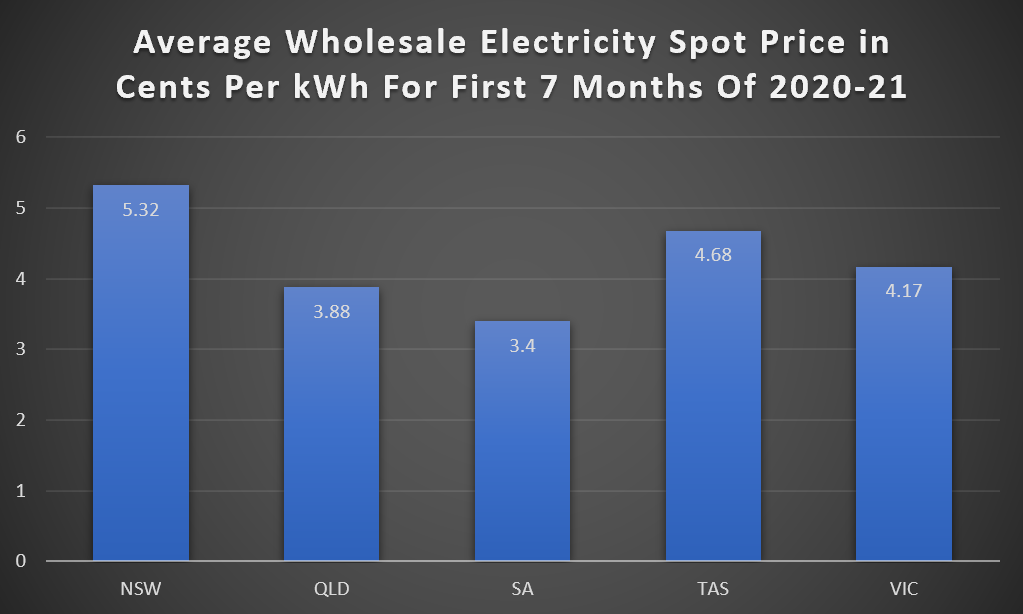
As you can see, the lowest priced wholesale electricity is in South Australia, with Queensland taking second place.
The keen-eyed among you may have noticed I omitted the left third of Australia. This isn’t because I hate Western Australia. It’s completely unrelated to my hatred for the hyperthermia state. It’s because information on WA wholesale electricity prices is hard to find. The information I do have suggests wholesale prices are definitely not cheap and it’s likely to be the most expensive state.
Historical Wholesale Prices
Here’s a line graph showing the average wholesale electricity spot price for all the states, except WA, for the past 10 financial years:
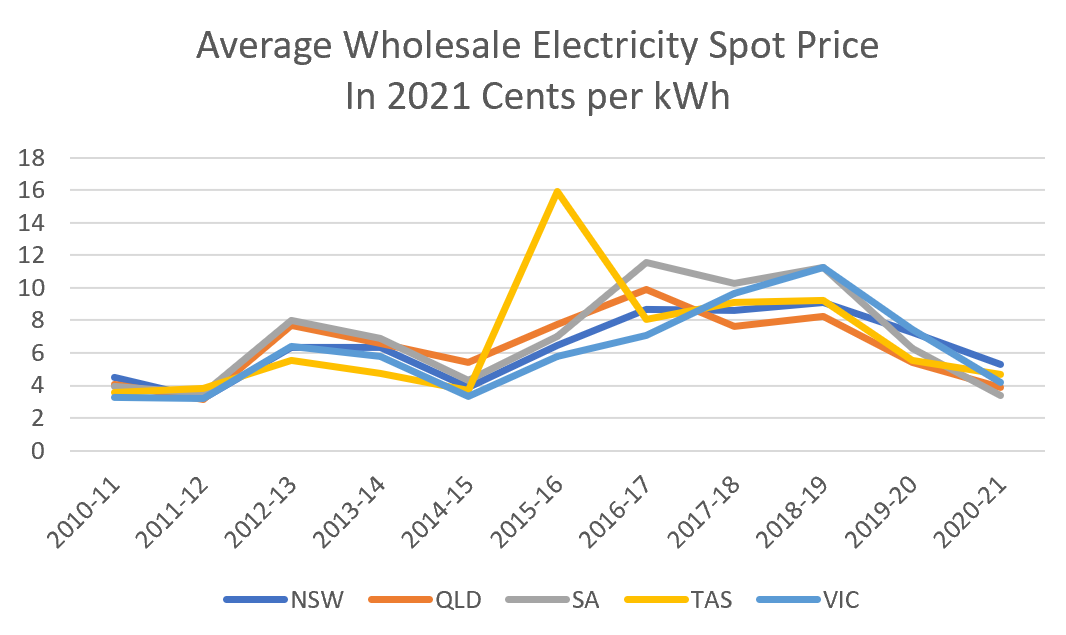
To make myself look useful and hide the fact I sneakily pay a guy in the Philippines $2 an hour to write these articles, I’ve accounted for inflation by converting the average wholesale spot prices for each financial year into today’s money. This is so people can see the real trends in electricity prices and not have inflation mislead them into thinking things are worse than they are.
As you can see, before this financial year, South Australia was generally the state with the most expensive wholesale electricity. We appreciate Tasmania’s effort to make SA look good in 2015 by having a drought at the same time a sea-dingo bit through the Basslink transmission cable, but it didn’t fool anyone.
Yet Another Graph
While I’m very fond of the line graph above, I don’t think it conveys how dramatically prices have dropped over the past two and a half years. So I made a bar graph showing average prices over the last three financial years, just to really rub it in:
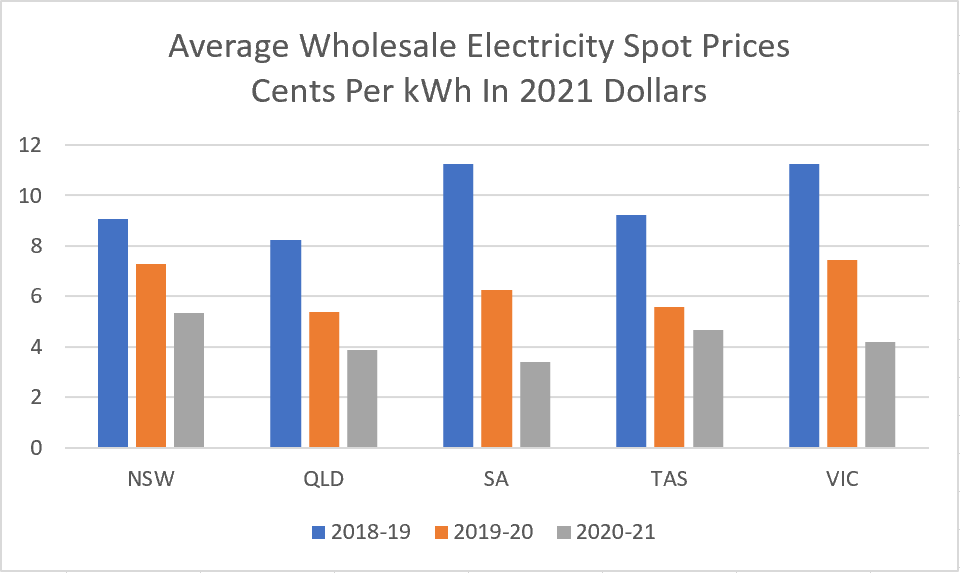
If I work out the percentage ball in average wholesale spot prices between the first 7 months of 2020-21 and 2018-19, I get the following:
- NSW: 41% decrease
- QLD: 53% decrease
- SA: 70% decrease
- TAS: 49% decrease
- VIC: 63% decrease
As you can see, those are big drops, with South Australia having the largest fall, followed by Victoria, which was the state most affected by COVID.
If we have some intense February heatwaves, it may be enough to significantly increase average wholesale electricity spot prices by the end of the financial year. But as there’s only one month of summer left, I think the average prices will stay close to where they are now. If we have a pleasant autumn, they may fall further.
What Does It Mean For Electricity Bills?
According to the Reserve Bank of Australia, the retail cost of electricity fell 7.5% in 2020 compared to 2019. Here are their three key Consumer Price Index (CPI) points:

The fall in wholesale electricity prices so far this year has not been as much. In July when retail electricity prices change for most Australians I expect to see them drop by about 3%.
Victorians, who get their new retail prices every January, received a significant cut last month and can expect another next year.
The fall in wholesale electricity spot prices in cents per kilowatt-hour since last financial year has been:
- NSW: 1.9 cents
- QLD: 1.5 cents
- SA: 2.8 cents
- TAS: 0.8 cents
- VIC: 3.2 cents
If spot prices alone determined wholesale electricity prices, then the retail cost of electricity per kilowatt-hour would fall by around these amounts. But because contracts are also involved the actual declines may differ. As last year’s cuts in electricity prices were not as large as the falls in wholesale spot prices indicated they would be, it is possible — fingers crossed — some of the price cut was delayed and will be passed on in July – or January for Victorians.
COVID Has Reduced Demand
The main reason for the fall in wholesale electricity prices has been the pandemic related worldwide economic slowdown. In 2020 overall electricity consumption in the five eastern states was down 1.4% from the previous year. But South Australia bucked the trend and instead had a small increase thanks to high residential electricity use over winter. SA was the only state to increase its electricity consumption.

“You think you have it tough with your measly modern pandemic? It’s nothing compared to what we had to put up with. Back in 1890, the Coronavirus was this big!”
Conventional Electricity Generation In The Time Of COVID
Australia’s three main sources of conventional generation are:
- Coal — this, unfortunately, is the big one at 66% of generation.
- Gas — 6.8% of generation.
- Hydroelectricity — 7.2% of generation.
If you see figures higher than these, those are likely to be for grid generation only, which doesn’t include rooftop solar.
Coal: Because most coal used in Australia is “stranded” (unable to be exported), the pandemic has had little effect on coal generation’s operating costs. But faced with lower demand and increasing renewable generation, coal power stations have had no choice other than bid in lower prices to stay alive.
Gas: Unlike domestic coal, the cost of natural gas fell by around half. This helped lower prices in South Australia as it generates more of its electricity from gas than any other state. But it’s decreasing. More than 60% of electricity generated in South Australia is now renewable. This means generation from gas, which used to supply around 70% of the state’s electricity, is now under 40%.
While gas prices are likely to rise after we beat COVID, I doubt we will ever see a return to the high prices we had just two years ago. This is because the very low cost of renewable energy combined with the falling cost of battery storage will soon result in much less demand for natural gas.
Hydro: Due to low rainfall, national hydroelectric generation is the lowest it has been since 2008. This makes the current record low wholesale electricity prices especially important and — provided the rains return — will help keep electricity prices down in the future.
South Australian Renewables Have Lowered Wholesale Prices
Going from the state known for the highest wholesale electricity prices to becoming the lowest is a major change. It’s especially impressive given South Australia was the only state to increase electricity consumption during the pandemic. I’m not certain how much of the price fall was due to lower gas prices and how much to increased renewable generation, but I’m confident renewables played a big part. This is because current gas prices are still higher than they were six years ago before the completion of east coast LNG export facilities forced them up to international levels.
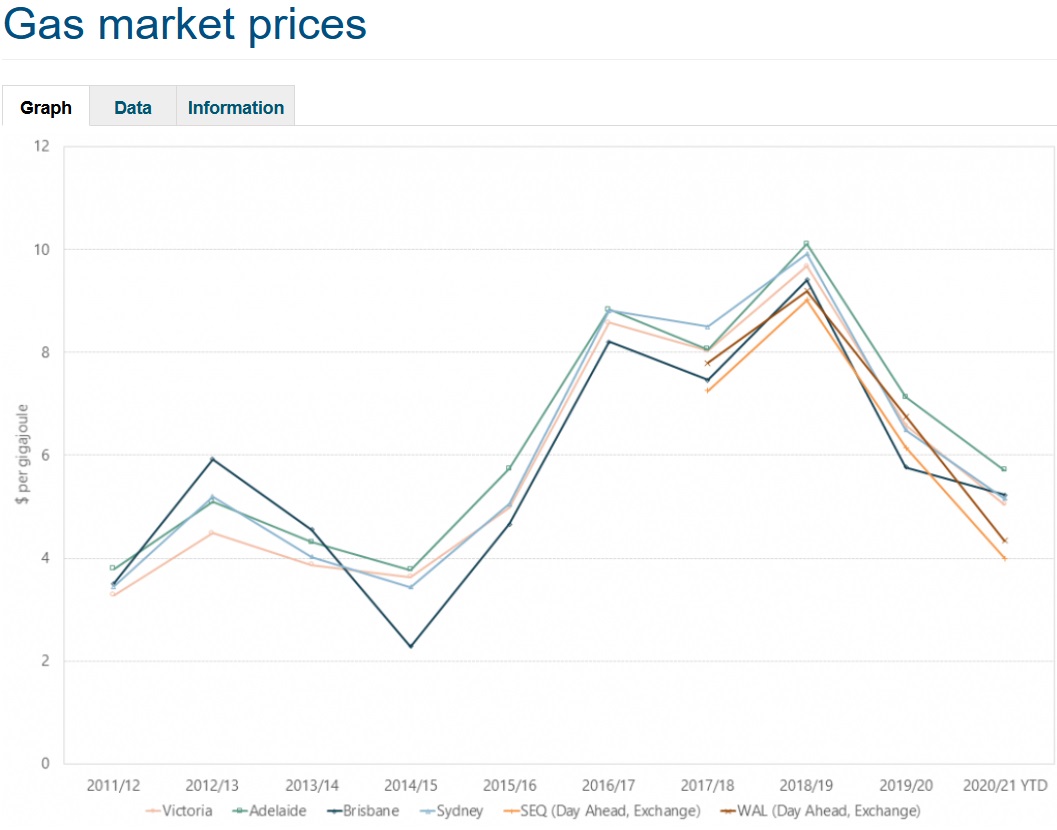
Image Credit: Australian Energy Regulator
For over a decade, South Australia has benefited from renewables pushing down wholesale electricity prices, but much of the benefit was obscured by rising natural gas prices. Pointing out wholesale electricity prices would be higher without renewables did not impress anti-renewable trolls – online or in the Federal Government.
Sure, some of them will still attempt to deny it. Eventually, they’ll give up and change the subject. Expect to soon hear troglodyte MPs insisting the real reason we must risk climate catastrophe is that Greta Thunberg isn’t polite — or some similar nonsense.
Original Source: https://www.solarquotes.com.au/blog/sa-wholesale-electricity/

